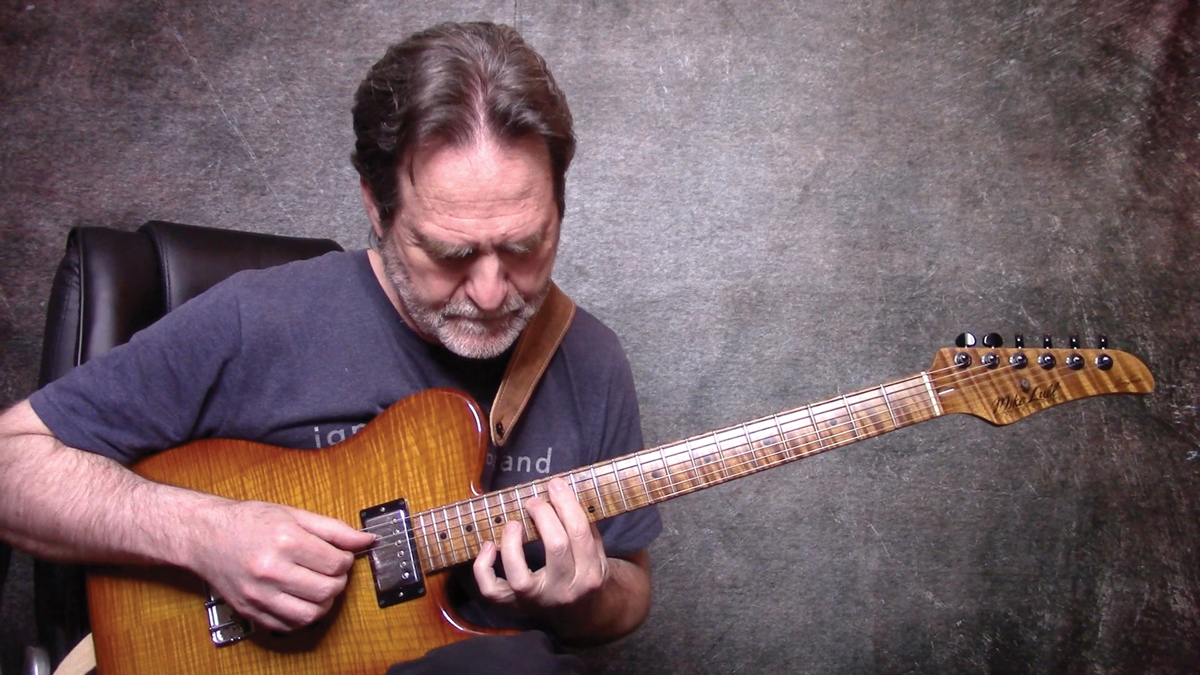The turnaround is a cornerstone of any good blues or jazz solo – and YouTube guitar tutor royalty Tim Lerch will up your game with these must-learn licks
Your next jam session is about to get a whole lot classier with these jazz-inflected blues turnaround ideas

Tim Lerch is a highly experienced guitar tutor, and his YouTube channel boasts over 50,000 subscribers. In this lesson we are delighted to have Tim onboard to share with us 14 of his favourite jazz-blues turnarounds. For context and continuity, all of our turnarounds are in the key of Bb major and will work over a blues in Bb. Let’s take a look a the basic 12-bar blues progression in our key of Bb major.
The phrase ‘turnaround’ is used to describe the last two or fours bars of the blues sequence. All of the chords in our Bb progression are dominant 7ths and this frees us up to substitute various chords with a view to creating more harmonically elaborate turnaround passages.
Tim uses various concepts to create the turnarounds. These can be as simple as fleshing out a bassline, or experimenting with contrapuntal ideas (eg the bass descends as the melody ascends). Tim also superimposes various classic chord progressions into the mix.
The I-VI-II-V progression is a favourite turnaround set of chords. In its diatonic form this progression features the chords Bb7-Gm7-Cm7-F7. If we then employ the concept of secondary dominant chords we can change this to the slightly stronger sounding Bb7-G7-C7-F7.
To create an even more sophisticated sound we can introduce tritone substitution, where our G7 becomes Db7, and the F7 becomes B7. This provides a chromatic element to the progression: Bb7-Db7-C7-B7. Tim talks us through the ideas behind each of the examples in the video and we have tabbed out the fingerings and provided the relevant theory background in the Performance Notes.
The examples were performed freetime so we have notated the approximate rhythms he implies, with an emphasis on making the notation as clear and easy to use as possible. Tim adopts a fingerstyle approach and this helps to facilitate a more pianistic delivery.
It’s worth noting that he rarely plays the full chord but instead uses two or three notes to imply the harmony. The 3rd and 7th interval are very descriptive of the sound and jazz musicians often refer to this as a ‘shell voicing’. He also regularly leaves out the root notes and this too helps to provide a more sophisticated flavour.
Tim is using a Mike Lull Custom solidbody with its neck pickup selected and the tone rolled down. It sounds great, and demonstrates how an archtop is not always required for a convincing warm jazz sound. The notation contains all of the articulations and phrasing from Tim’s video performance. It’d be well worth taking a close look at the way he fingers and picks the phrases.
Hopefully there will be a new technique, lick or phrase in here for you to perfect. If you find one you like, you should memorise it and use it in future blues jams. Once you have mastered some of Tim’s turnarounds why not play some ideas of your own for your next blues jam?
Get the tone
Amp Settings: Gain 3, Bass 8, Middle 7, Treble 4, Reverb 5
When practicing these examples, virtually any guitar will work fine, but a clean tone using the neck pickup is a solid starting place. It’s also worth experimenting with the guitar’s tone and volume controls, and for that jazz-style sound you may find rolling off a bit of tone does the trick. A wash of reverb can be added for some welcome ambience.
Turnaround 1
This opening turnaround has a couple of things going on. First, the melody notes on the top are descending the Bb Mixolydian scale (Bb-C-D-Eb-F-G-Ab). To smooth out the line an extra chromatic note is added (Gb). The bass is ascending and with this framework in place Tim fills in the middle notes.
Turnaround 2
In this example, Tim expands on the idea from turnaround 1 and adds a little more colour to the melody. You may need to maintain a good posture to facilitate the finger stretches required here. This framework is based on the classic blues turnaround and is a must to learn.
Turnaround 3
This next one is more from the traditional blues world and is reminiscent of the type of turnarounds used by Robert Johnson. Again, we find contrapuntal movement with the bass notes descending and the middle note ascending. The top note provides harmonic continuity by staying the same, as a sort of pedal tone. This one is relatively easy to play and is a must if you’d like to turn some heads at the next blues jam
Turnaround 4
This turnaround introduces a run of chromatically descending minor 7 chords. It’s relatively easy to play and sounds great. It’s worth noting that Tim often leaves out the 5th of the chord.
The root, 3d and 7th intervals provide enough harmonic information to outline the sound of the chords in a concise and sophisticated sounding way. This also frees up other fingers to play the melody notes or fills.
Turnaround 5
This example demonstrates how a melody can be introduced to the framework that you learned in turnaround 4.
Turnaround 6
Introducing the major 7th chord opens up access to the jazzier side of things, the Gb major 7th providing an ear-grabbing twist to the sound.
Turnaround 7
In this piece Tim puts together the ideas from turnarounds 5 and 6 into one long and flowing phrase.
Turnaround 8
For this classic I-VI-II-V progression, Tim starts in a higher register which provides an opportunity for the bass to descend instead of ascend.
Turnaround 9
Here, Tim expands on the framework established in the previous example, with extra melody notes and a simple walking bassline added.
Turnaround 10
Here, Tim expands into a four-bar turnaround. Many of the ideas we have previously learned are joined together to create one long phrase. By learning small segments of the turnarounds we can put them together on the fly to create an endless number of variations.
Turnaround 11
Tim treats us to another longer idea. This time the chromatic minor 7th chord run is used to great effect in the final two bars.
Turnaround 12
In this example, Tim uses ‘shell’ voicings to create a chromatic run of chords (Bb7- G7-C7-F7). Using only two notes for the chords frees up the other fretting-hand fi ngers to play additional licks. Sliding into the melody notes from a semitone below provides that jazz-style flavour.
Turnaround 13
For his penultimate idea, Tim opts for a standard I-IV-V turnaround, introducing minor triads to create a slightly fancier sound.
Turnaround 14
To conclude his turnaround masterclass, Tim shares a great chord lick. It’s played over the I chord (Bb7) then transposed to fit the Eb7. We have provided chord symbols for the overall harmonic context, as opposed to the individual chords as they pass. Now add as many of these ideas to your lickbag as possible!
Get The Pick Newsletter
All the latest guitar news, interviews, lessons, reviews, deals and more, direct to your inbox!
Jon Bishop is a UK-based guitarist and freelance musician, and a longtime contributor to Guitar Techniques and Total Guitar. He's a graduate of the Academy of Contemporary Music in Guildford and is touring and recording guitarist for British rock 'n' roll royalty Shakin’ Stevens.








![Joe Bonamassa [left] wears a deep blue suit and polka-dotted shirt and plays his green refin Strat; the late Irish blues legend Rory Gallagher [right] screams and inflicts some punishment on his heavily worn number one Stratocaster.](https://cdn.mos.cms.futurecdn.net/cw28h7UBcTVfTLs7p7eiLe.jpg)


